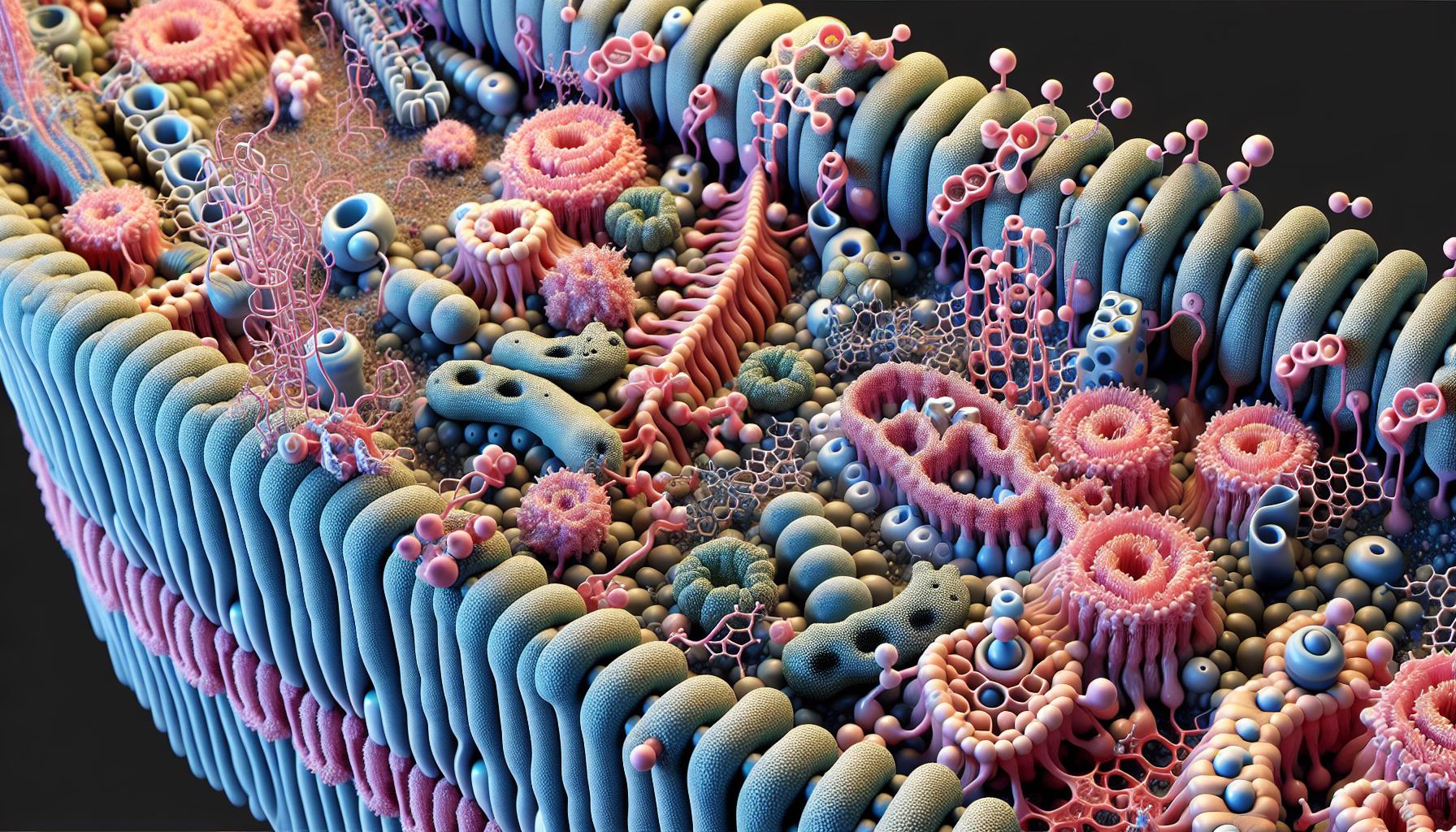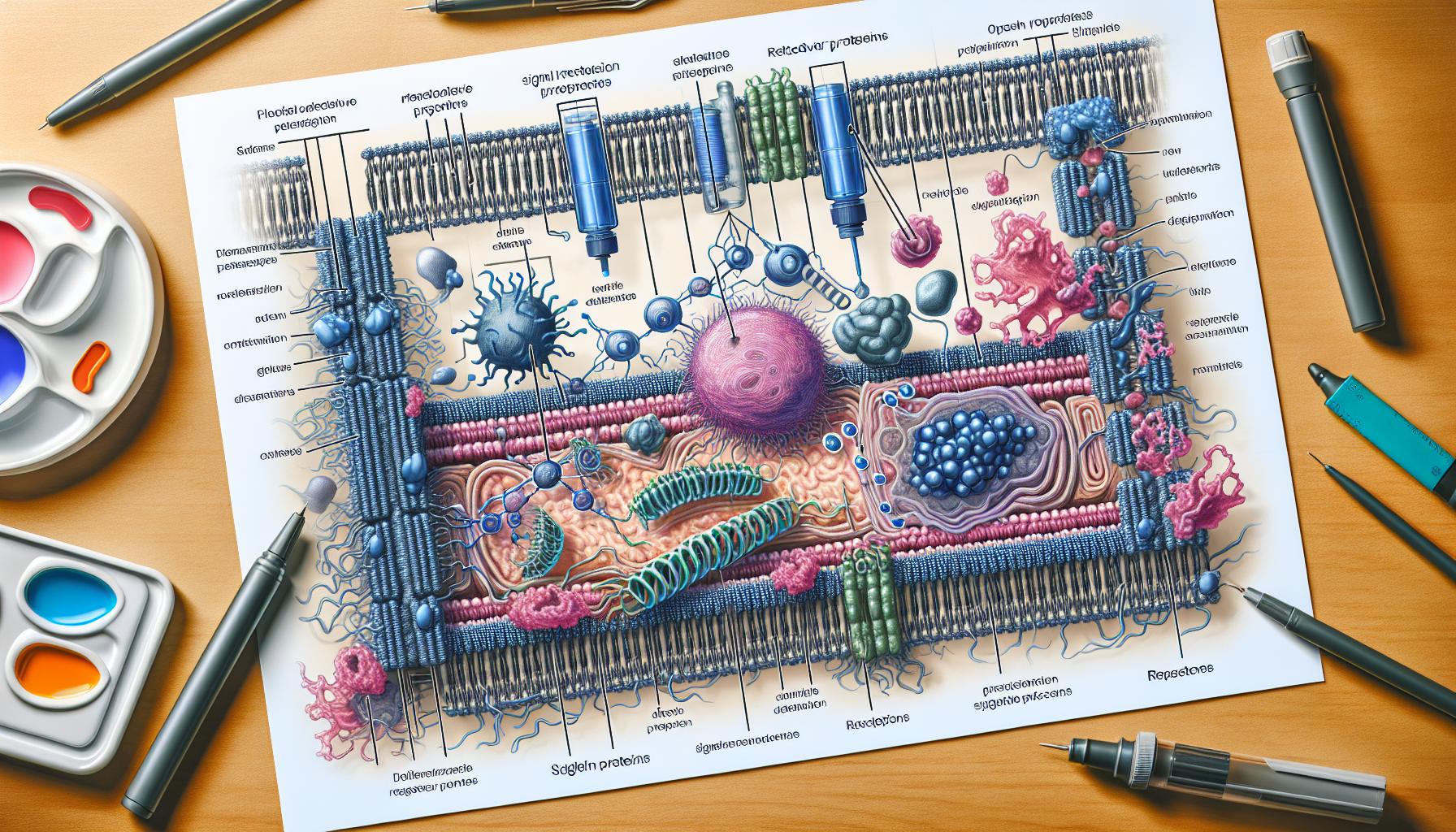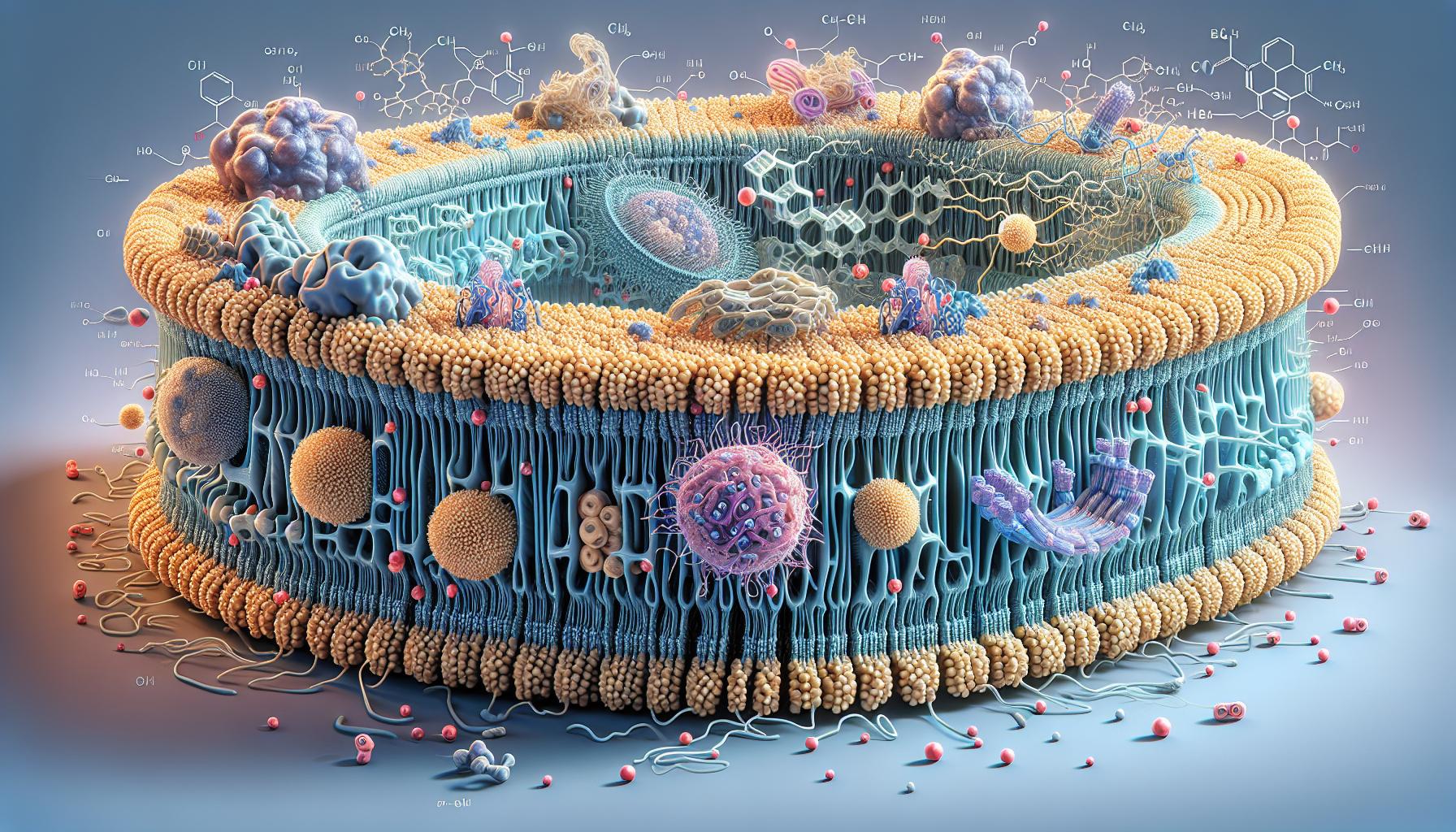The cell membrane is a fascinating structure that plays a crucial role in the life of animal cells. It’s not just a protective barrier; it’s a dynamic interface that regulates what enters and exits the cell, maintaining the delicate balance needed for cellular function. Understanding its composition and function can unlock insights into everything from disease mechanisms to advancements in biotechnology.
As I delve into the intricacies of the animal cell membrane, you’ll discover how its unique lipid bilayer and embedded proteins contribute to cellular communication and transport. This exploration is essential for anyone interested in cell biology or the broader implications for health and disease. Join me as we unravel the complexities of this vital cellular component.
Key Takeaways
- The cell membrane is a dynamic structure that regulates substance flow and facilitates cellular communication in animal cells.
- Comprised mainly of a phospholipid bilayer, the membrane’s unique composition allows for selective permeability and fluidity.
- Integral membrane proteins play key roles in transport, signaling, and communication, influencing vital cellular processes.
- Transport mechanisms, including passive and active transport, are essential for maintaining cellular homeostasis and nutrient uptake.
- Research into cell membranes has significant implications for understanding diseases and developing innovative biotechnological applications, such as targeted therapies and drug delivery systems.
- Comparisons between animal cell membranes and those of plants, fungi, and bacteria highlight key differences and shared functions important for cellular biology.
Animal:Z9surbj6cs8= Cell Membrane
The cell membrane of animal:z9surbj6cs8= cell membrane serves several critical functions, acting as a selective barrier that controls the flow of substances. This membrane consists mainly of a phospholipid bilayer, where hydrophilic heads face outward and hydrophobic tails face inward, creating a stable yet flexible structure. Embedded proteins facilitate communication and transport, while cholesterol molecules add fluidity and stability.
Understanding this membrane’s composition is crucial. Lipids and proteins work together to enable cellular processes, including signaling, nutrient uptake, and waste removal. Membrane dynamics change in response to various stimuli, affecting how cells interact with their environment. This interaction is vital for processes like immune responses and cell communication.
Research into the Animal:Z9surbj6cs8= cell membrane contributes to broader scientific knowledge, especially in cell biology and medicine. Insights gained can illuminate disease mechanisms, leading to innovations in treatment strategies and biotechnology applications. The complex interplay of components within the membrane exemplifies the intricate nature of cellular life and its implications for health and disease.
Structural Components

The cell membrane’s structural components are vital for its functionality and overall integrity. Key elements include the phospholipid bilayer and integral proteins, each contributing uniquely to membrane dynamics.
Phospholipid Bilayer
The phospholipid bilayer forms the foundational structure of the cell membrane. Composed of two layers of phospholipids, the hydrophobic fatty acid tails face inward, while the hydrophilic phosphate heads face outward. This arrangement creates a semi-permeable barrier. The bilayer permits selective passage of water and small nonpolar molecules. Influence from environmental factors can alter its fluidity, impacting cellular processes such as signaling and nutrient transport.
Proteins and Their Functions
Membrane proteins serve essential roles in facilitating communication and movement across the cell membrane. Integral proteins span the bilayer and function as channels, transporters, or receptors.
- Channel Proteins: Allow specific ions and molecules to pass through the membrane following concentration gradients.
- Transport Proteins: Actively move substances against their gradients, using energy.
- Receptor Proteins: Bind to signaling molecules, triggering cellular responses.
These proteins are crucial for processes such as signal transduction, cell adhesion, and immune response. Understanding their functions provides insights into cellular health and mechanisms underlying various diseases.
Role in Cellular Processes

The animal:z9surbj6cs8= cell membrane plays a critical role in a variety of cellular processes. Understanding its functions enhances knowledge of how cells interact with their environment and maintain internal balance.
Transport Mechanisms
Transport mechanisms across the cell membrane are essential for maintaining homeostasis. Passive transport involves the movement of molecules across the membrane without energy expenditure, relying on concentration gradients. Examples include:
- Diffusion: Movement of small, nonpolar molecules, such as oxygen and carbon dioxide, directly through the lipid bilayer.
- Facilitated diffusion: Utilization of channel proteins for ions and polar molecules, such as glucose, to cross the membrane.
- Osmosis: The movement of water molecules through specialized water channels called aquaporins.
Active transport requires energy, often in the form of ATP, to move substances against their concentration gradients. Key processes in this category include:
- Sodium-potassium pump: Transports sodium ions out of the cell and potassium ions into the cell, crucial for maintaining electrochemical gradients.
- Endocytosis: Process in which cells engulf substances, facilitating the intake of larger molecules and particles.
- Exocytosis: Mechanism for expelling materials, such as neurotransmitters, from the cell.
Signal Transduction
Signal transduction processes rely heavily on the cell membrane’s receptor proteins. These proteins detect extracellular signals and initiate cellular responses. Key components of signal transduction include:
- Receptor activation: Binding of signaling molecules, such as hormones or neurotransmitters, triggers a conformational change in the receptor.
- Second messengers: Intracellular molecules, like cyclic AMP and calcium ions, amplify the signal and propagate the response within the cell.
- Cellular response: Initiation of specific functions, such as gene expression, enzyme activity, or alteration of cell behavior, resulting from successful signal transduction.
Understanding these processes highlights the importance of the cell membrane in communication and regulation, which are vital for proper cellular function and overall health.
Comparison with Other Cell Membranes

I compare the animal cell membrane with other cell membranes to highlight unique features and shared functions. Plant, fungal, and bacterial cell membranes vary in composition and structure while serving the fundamental role of regulating cellular environments.
Plant Cell Membrane vs. Animal Cell Membrane
- Cell Wall Presence: Plant cells possess a rigid cell wall made of cellulose. This structure lies outside the cell membrane, providing additional support and protection.
- Chloroplasts: Plant cell membranes interact with chloroplasts for photosynthesis, featuring specialized transport proteins.
- Plasmodesmata: These channels connect plant cells, allowing for communication and nutrient exchange, which differs from animal cell junctions.
Fungal Cell Membrane vs. Animal Cell Membrane
- Chitin Composition: Fungal cell membranes incorporate chitin, providing structural integrity. This contrasts with the phospholipid bilayer in animal cells.
- Ergosterol Presence: Fungal membranes contain ergosterol instead of cholesterol, affecting fluidity and permeability.
Bacterial Cell Membrane vs. Animal Cell Membrane
- Peptidoglycan Layer: Many bacteria have a thick peptidoglycan layer outside their cell membrane, which animal cells lack. This layer aids in maintaining shape and resisting osmotic pressure.
- Membrane Fluidity: Bacterial membranes often adapt rapidly to environmental changes, showcasing a different dynamic compared to animal cell membranes.
- Selective Permeability: All cell membranes serve as selective barriers, controlling substance movement to maintain homeostasis.
- Signal Transduction: Receptor proteins in all cell membranes transmit signals, facilitating essential communication and response mechanisms.
Understanding these comparisons deepens my insight into the diverse cellular functions and evolutionary adaptations that enhance survival across species. The unique and shared characteristics of cell membranes reveal crucial information about cellular interactions, adaptation, and disease mechanisms, making it vital to my study of cell biology.
Emerging Research and Applications
Emerging research on animal:z9surbj6cs8= cell membrane focuses on innovative applications in health and biotechnology. Scientists study membrane protein structures to develop targeted therapies for diseases like cancer and autoimmune disorders. Understanding protein interactions within the membrane enables the creation of pharmaceuticals that can alter signaling pathways, enhancing treatment efficacy.
Applications in drug delivery systems are gaining traction. Researchers engineer liposomes, small vesicles mimicking cell membranes, to deliver therapeutics directly to targeted tissues. These liposomes improve the pharmacokinetics of drugs, reducing side effects and increasing treatment precision.
Nanotechnology also plays a vital role in cell membrane research. Researchers create bio-inspired materials that mimic cell membrane properties for use in biosensors. These sensors detect pathogens or chemical changes in the environment, providing early warning systems for disease outbreaks.
Furthermore, studies on animal:z9surbj6cs8= cell membrane dynamics reveal insights into cell migration and immune responses. Researchers examine how membranes respond to mechanical stimuli and their implications for tissue engineering. Understanding these processes could lead to advancements in regenerative medicine and treatment strategies for inflammatory diseases.
The role of the membrane in cellular interactions opens avenues for investigating microbial resistance mechanisms. By deciphering membrane composition and dynamics, researchers can design new antimicrobial agents that disrupt bacterial cell membranes, tackling antibiotic resistance.
Ongoing research explores the multifaceted role of the cell membrane in health and biotechnology, paving the way for novel therapeutic strategies and applications.
Potential Advancements in Health
The cell membrane is a fascinating and complex structure that plays a vital role in the life of animal cells. Its ability to regulate what enters and exits the cell is crucial for maintaining cellular health and function. As I delve deeper into the research surrounding cell membranes, I’m excited about the potential advancements in health and biotechnology that stem from understanding these dynamic barriers.
From targeted therapies to innovative drug delivery systems, the implications of membrane research are vast and promising. The more we learn about the intricacies of the cell membrane, the better equipped we’ll be to tackle diseases and enhance our understanding of cellular processes. I encourage everyone to continue exploring this essential component of life and its impact on our health and technology.



